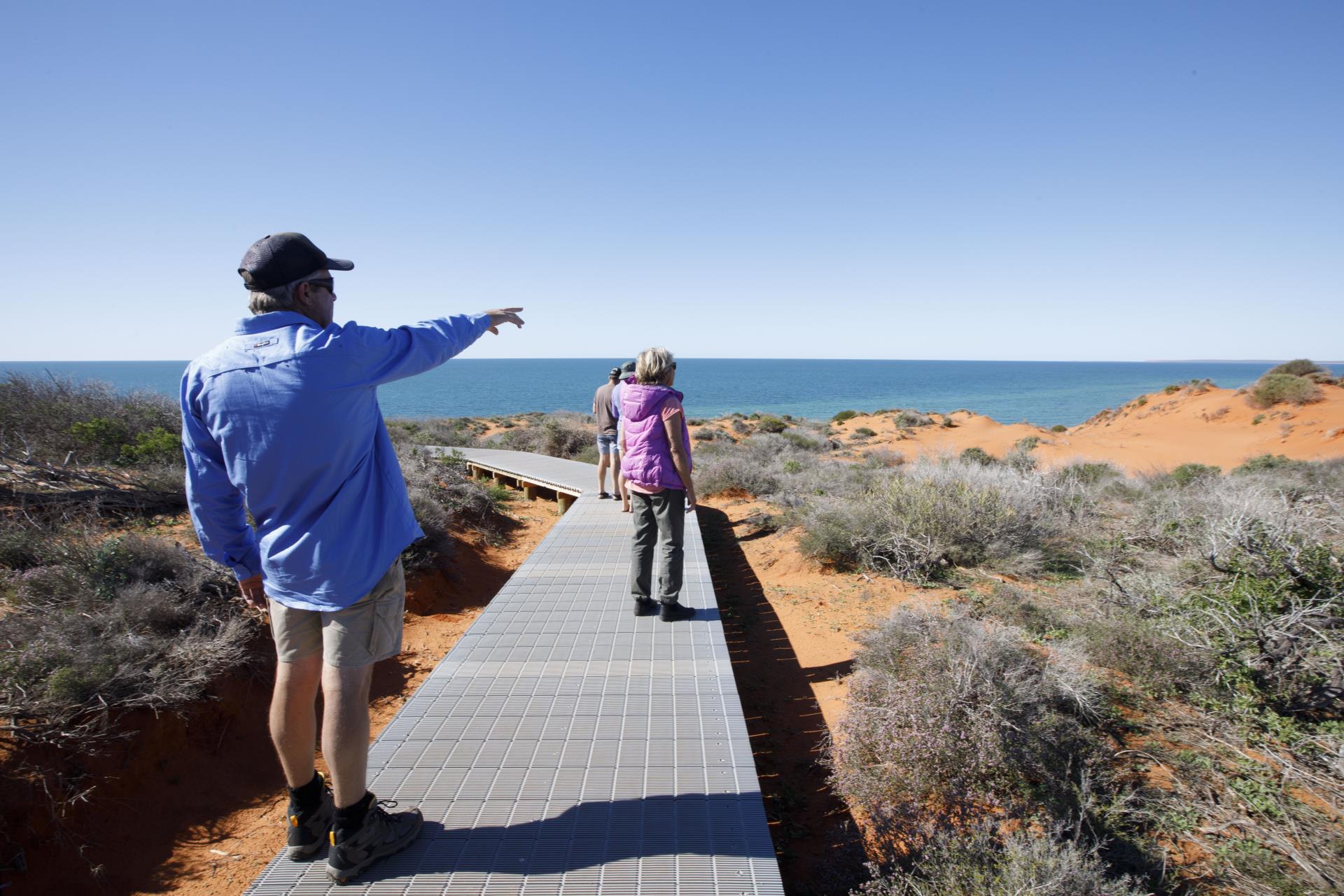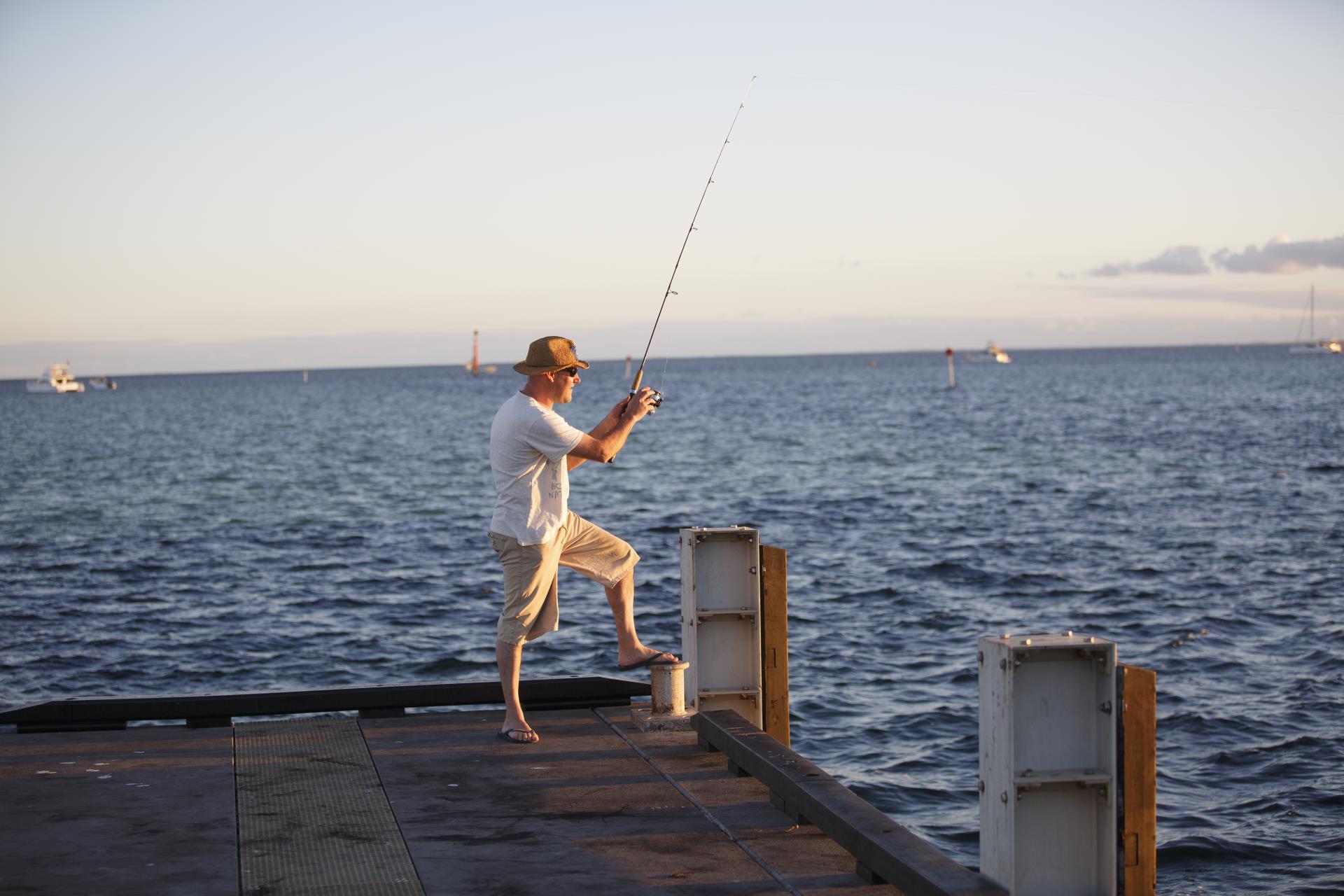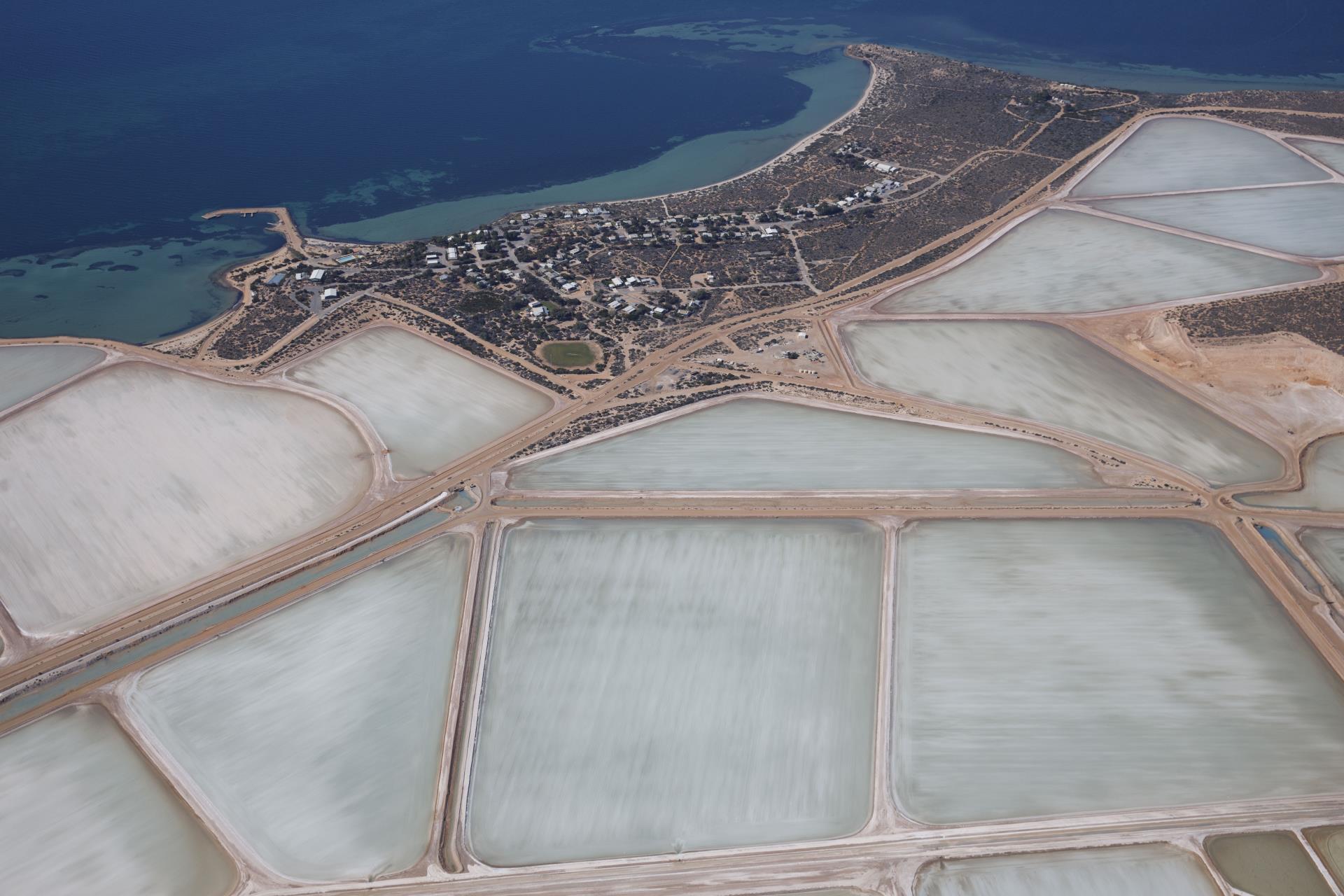Key Industries
Tourism
Tourism is a vital industry in Shark Bay. The industry is based on the area’s World Heritage status and unique natural attractions, including the stromatolites, wildflowers, native animals, Monkey Mia dolphins, dugongs, whales, turtles, manta-rays and much more. Being one of only 21 sites worldwide to satisfy the four natural criteria required for World Heritage listing, Shark Bay is home to awe-inspiring natural beauty.
Tourism Western Australia estimates that on average, across 2014 - 2016, there were 108,000 visitors per year to the Shire of Shark Bay region.
Shark Bay Beach Seine and Mesh Net Managed Fishery
The Shark Bay Beach Seine and Mesh Net Managed Fishery (SBBSMNF) is based at Denham and uses a combination of beach seine and haul net gears in the waters of inner Shark Bay. Four main species/groups are taken by the fishery: whiting, sea mullet, tailor and yellowfin bream. Small quantities of other assorted species (e.g. garfish and trevallies) are also caught.
Currently around 20 fishers are employed in the SBBSMNF based on six fishery licenses actually operating. Fishing and associated fish processing is an important source of local employment - the fishery, although relatively small-scale, makes a significant contribution to the Denham economy and community.
For further information, please refer to the Department of Industries and Regional Development.
Gascoyne Demersal Scalefish Fishery
The Gascoyne Demersal Scalefish Fishery encompasses commercial and recreational (line) fishing for demersal scalefish in the continental shelf waters of the Gascoyne Coast Bioregion. Since 1 November 2010, the Gascoyne Demersal Scalefish Managed Fishery (GDSF) has incorporated the pre-existing pink snapper quota system from the Shark Bay Snapper. Managed Fishery (SBSF) plus the previously open access area south of Coral Bay. Commercial vessels in these waters historically focussed on the oceanic stock of pink snapper during the winter months.
Inner Shark Bay Scalefish Fishery
The Inner Shark Bay Scalefish Fishery encompasses commercial and recreational fishing for scalefish species within the waters of the Eastern Gulf, Denham Sound and Freycinet Estuary in inner Shark Bay This includes the activities of the Shark Bay Beach Seine and Mesh Net Managed Fishery\ (SBBSMNF) and the Inner Shark Bay Recreational Fishery.
Shark Bay Recreational Fishery 
The ‘inner Shark Bay recreational fishery’ encompasses the recreational fishing activities undertaken within the Shark Bay Marine Park and the waters of Denham Sound. Most recreational fishing is boat-based (rod and line, handline) with a minor shore-based (rod and line) component. A limited number of licensed charter vessels operate out of Monkey Mia and Denham . A range of species are regularly caught by boat-based recreational fishers with principal target species being black snapper (blue-lined or grass emperor), pink snapper, whiting, and blackspot tuskfish (bluebone).
For most species, the recreational fishery is managed using the normal combination of daily bag, possession, size and gear limits. For pink snapper more complex arrangements are used within the Eastern Gulf, Denham Sound and Freycinet Estuary. These stocks are managed separately with explicit Total Allowable Catch (TAC) targets.
For further information, please refer to the Department of Primary Industries and Regional Development.
Agriculture
Pastoral leases occur in, and adjacent to, the World Heritage Property. The Shark Bay pastoral industry is one of the Shark Bay's earliest and longest running industries and was based on wool production, however due to low wool prices substitution of cattle and goats for sheep has occurred. There are currently eleven pastoral leases in various stages of stock activity with most currently raising and selling goats.
In recent years a number of pastoral stations or parts of stations have been set aside or identified as potential areas for conservation. As part of the 2015 pastoral lease renewal negotiations, arrangements for the acquisition and management of pastoral leases or parts of leases for conservation purposes will take effect.
Useless Loop Salt Mine

Mineral and Petroleum industries that make up the total production value in the Shire of Shark Bay are salt and limestone/limesand production. The Useless Loop Salt Mine, operated by Mitsui, currently produces approximately 1.3 million tonnes of salt per year which is it's plant capacity. Shark Bay salt is sold in some industrial markets but is predominantly used in high-end food markets in Japan and other Asian countries. Food manufacturers value its distinctive texture and purity. As Western Australia is close in proximity to its largest markets, demand for salt is likely to increase in the future.
Gunson Resources - Coburn Heavy Mineral Sands Project
The Gunson Resources Ltd Coburn Project (Mineral Sands) commenced exploratory drilling in 2000 and has identified a major heavy mineral sand deposit known as Amy Zone, which is over 35 kilometres long, up to 3 kilometres wide and between 10-50 metres thick. Gunson completed a bankable feasibility study in December 2004 showing that Amy Zone can support a high volume, low cost, long life mining operation producing quality mineral products. It is currently the world's third largest zircon development project.
In May 2006, the Western Australian Environment Minister granted approval for the proposed mine, subject to EPA approval of 15 environmental management plans. Approximately two thirds of the Amy Zone has government ministerial approval for mining.
Gunson completed a Definitive Feasibility Study on the Project in 2009. This study revealed that the Amy Zone could support a high volume, low cost, long life mining operation that produces quality heavy mineral products.
An offtake agreement for 54,000 tonnes per annum of the ilmenite product was signed with the world's largest pigment producer, DuPont, in 2012 and negotiations for the remainder of the ilmenite and the HiTi product are in progress.
The Company is currently seeking to attract a strategic partner to help fund the project development in return for a significant equity interest and/or assured long term supplies of zircon and titanium dioxide products.